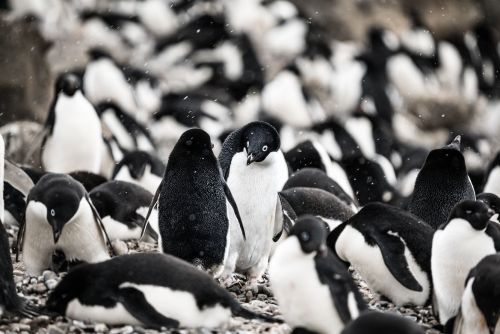Hummingbirds first appeared on Earth about 22 million years ago in South America. To this day, they live exclusively in the intertropical zone of the Americas, where as many as 361 species of these birds can be found.
They are known for the distinctive sound produced by their fast-moving wings, hence their name. Interestingly, hummingbirds use the sound of their wings to communicate with other individuals. Their flight is also unusual, as they can hover in the air and fly backwards.
The smallest species of hummingbird is the bee hummingbird (Mellisuga helenae), which does not exceed 6.3 cm in length, of which the beak alone reaches 1.2 cm in length. The largest of the species is the giant hummingbird (Patagona gigas), which can reach 23 cm in length.
They owe this to the special design of their wings, which also allows hummingbirds to stop their flight at any time and hover in place.
Their flight requires huge amounts of oxygen, which the heart must pump at a tremendous rate. The breathing rate also increases, and in some species, even at rest, it is around 250 breaths per minute.
It is estimated that a hummingbird's oxygen consumption per gram of muscle tissue during flight is about 10 times that of top athletes.
The differences vary considerably from species to species. Birds of the Mellisugini tribe show a large difference in size between the two sexes, while such a difference is small in the Lesbiini tribe.
Their prey is small insects that they catch in flight. They may also eat spiders, larvae, and insect eggs. Insects provide hummingbirds with fats, proteins, and salts that they cannot obtain from nectar.
Some also believe that hummingbirds consume small amounts of ash or sand, perhaps to replenish mineral salts. However, this phenomenon has not been thoroughly studied, and the mere "pecking" of sand may turn out to be simply hunting for the small insects that live in it.
This occurs in male ruby-throated hummingbirds (Archilochus colubris) during courtship. These birds can flap their wings up to 200 times per second.
The Anna's hummingbird (Calypte anna) is considered the fastest moving species of hummingbird. It is also the world's fastest bird for its size, capable of traveling about 380 lengths of its body in a second. By comparison, the fastest airplane ever built, the North American X-15, which reaches a speed of 7274 km/h, travels only 130 fuselage lengths per second.
Knowledge of how hummingbirds obtain their food only became widespread in 2011, following the publication of research by scientist Alejandro Rico-Guevara. Previous theories suggested that hummingbirds used capillary phenomena to feed.












